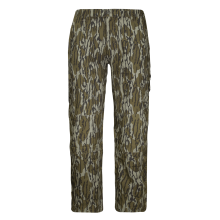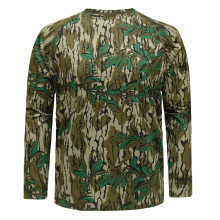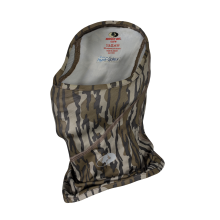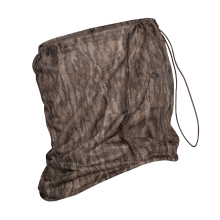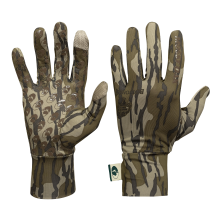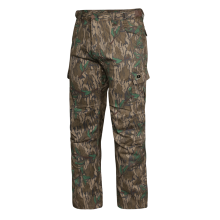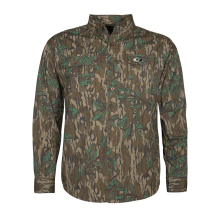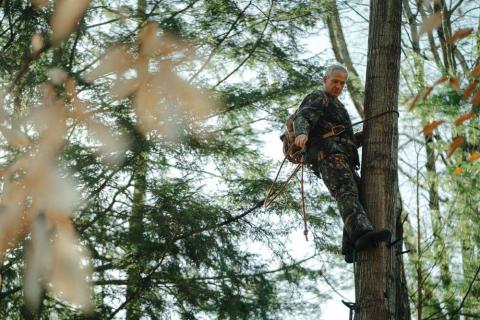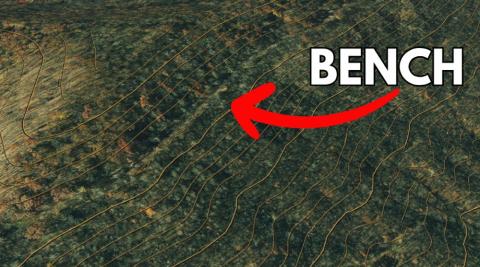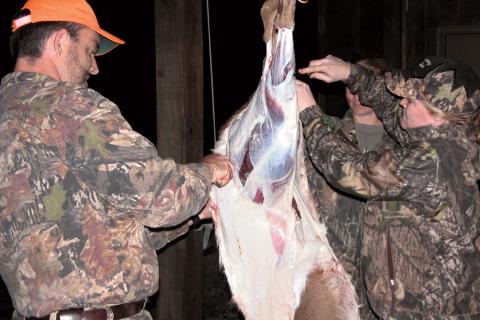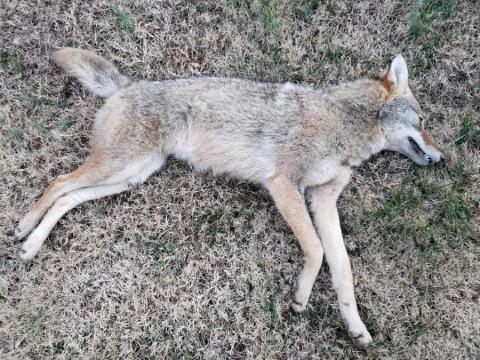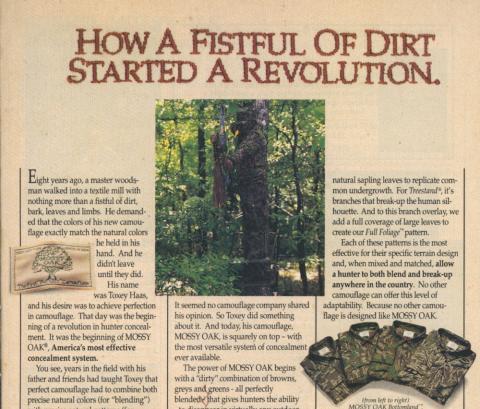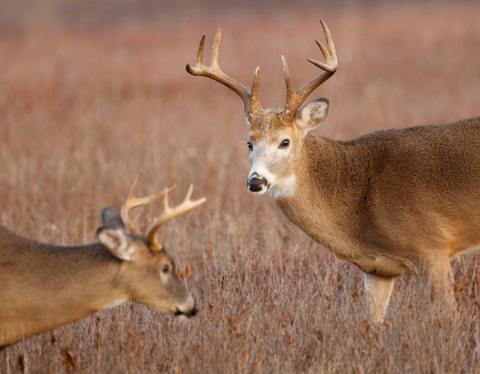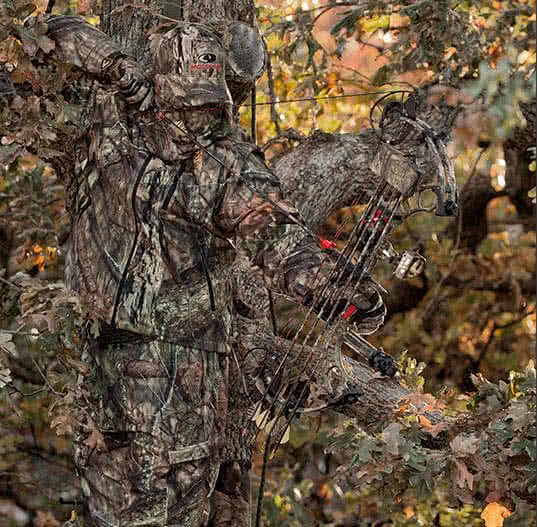By Harold Elie
Crawling out of winter’s slumber, spring brings its fragrances of grasses and flowers, migrating songbirds, and the emergence of life in the natural world. As pleasing as it is to hear the returning songs of cardinals, robins, and larks, it’s hard to beat the sound of a Tom turkey gobbling in the early twilight hours during what only marketing graduates could’ve coined as “spring thunder.” For many years now, the thunderous gobble of an eastern wild turkey—accompanied by their spitting, drumming, and egocentric strutting—has been one of my favorite sounds to hunt and observe, outside of the bobwhite quail. But I began to appreciate another bird during this season for similar attributes to the turkey, though it’s not hunted in the spring and, frankly, is barely hunted anywhere in the fall due to lack of habitat, genetic diversity, farming practices, and development that have reduced its home range to only a handful of states and micro-habitats within them. One of conservation’s many canaries in a coal mine, the prairie chicken was once a dominant sound of spring for many who are now chalking up calls for the upcoming turkey season.

Much like turkeys, prairie chickens are “lek” birds, or displaying birds, and do their mating in the spring. Similar to how a Tom will strut to impress or flex dominance, the prairie chicken does much the same on what is known as a “booming ground” or lek. Turkey hunters would refer to this relative site as a “strutting zone.” Typically, they are similar in that their leks are short grass or stubble areas formed from some sort of disruption—whether it be wind-blown hilltops, farming practices, or burns for land management purposes. This is not to say you’ll see turkeys strutting alongside prairie chickens, but rather to paint a picture of the grounds these small birds seek out to perform their short show each spring morning. Though unlike the Tom’s massive tail fan, beard, and sheer size, the prairie chicken is just as striking. It has short pinnae feathers that stick up like rabbit ears and a booming air sac along its neck that glows as bright yellow as the morning sun on a Sunday morning program. Their stubby, square tail fans puff out as they lean forward and shuffle their feet in such a rhythmic manner that, upon seeing the commotion, one can understand from whom the natives of the prairie learned to dance. They set boundaries in the earth and fight and dance to establish dominance. The hens make their selections and disperse after mating.
It would be difficult to suppress the highly anticipated and illustrious eastern turkey gobble of spring that hunters and birders alike seek to hear. It’s magnificent and should be there each spring, but in the same breath, it should never overshadow the value of a songbird or even a simple crow. Some vocalizations the prairie chickens make are haunting. With eyes closed in their presence at dawn, one can be transported to another era, when prairie chicken leks were as common on the prairie as a man today standing on the side of the road listening for gobbles on opening day.
At dawn, it starts faintly, and as they draw closer to the lek, it grows louder—then abruptly stops. Those golden air sacs help create a haunting booming call that sounds akin to a person blowing their breath through tight lips over a glass Mexican Coke bottle.I was fortunate enough to experience a prairie chicken lek viewing a few times in my life in part of their original home range—the tallgrass prairie of Illinois. Even more fortunate, one section and the home office of the Illinois Prairie Chicken Sanctuary lies in my home county. Prairie Ridge State Natural Area is owned and managed by the Illinois Department of Natural Resources.

The current area manager, Bob Gillespie, invited me and a few colleagues up for a viewing to see something I’d never seen in the town I grew up in. Bob gave me what would turn into my future duck hunting friend’s phone number, and I called his father, Jim, to schedule a time to join a census viewing. The first time I met Jim formally as an adult was on a foggy Jasper County morning, but I’d met him as a kid on a field trip to the local state park he managed. One could liken Jim’s appearance to a cleaner-cut version of The Byrds’ David Crosby. Though he lacks David’s long hair, he has a strong mustache, and if you catch him during duck season or early spring, likely a signature toboggan. Jim, a retired area manager and botanist, led the other interested parties—mostly fellow retired biologists—and myself out to the blind in his neoprene waders as the rest of us followed behind his spotlight, which lit the grassy, wet trail embedded in the prairie pothole.
During our short voyage and downtime inside the blinds, he talked about the prairie chickens’ characteristics, their habitat needs, what they do at Prairie Ridge to mimic those needs, and the birds’ struggles in Illinois, where they were once the most bountiful. Being the only one lacking a science degree in the blind, it didn’t take one to see the plight of the prairie chicken in my boyhood state: the loss of their diverse tallgrass prairie-to-cropland ratio. (When early settlers started breaking prairie sod and planting wheat, the chicken’s populations were at their highest, as slight agricultural disruption was welcomed by the birds.) Prairie Ridge itself is roughly 1,600 acres and is surrounded by row crop fields farmed ditch to ditch for hundreds of miles, broken only by farmhouses laid on fescue lawns and riparian timber draws.
Chickens are distance flyers, and the only other prairie of similar size is about 45 miles away on another state-owned tract for the same purpose. With no fences or supplemental feeding, it’s shocking to me that the chickens stay here. Jim has said some don’t; they’ve found radio-collared birds 50 miles to the north on historical booming grounds that no longer hold suitable habitat. But that doesn’t stop the chickens from seeking out terrain features they favor—it seems as innate to them as breathing is to us.
Outside of the typical avian and fur-bearing predators, prairie chickens also contend with a fellow invasive game bird: the ring-necked pheasant, which would occupy the same habitat. Pheasants are nest parasites, laying their eggs in other ground-nesting birds’ nests and letting them do the hard work of incubation. Because pheasant eggs incubate slightly faster than prairie chicken eggs, the mother hen will leave the nest with the hatched pheasants and destroy her own eggs, assuming they were duds. This simple math, in addition to the pheasant’s mainstream popularity in our culture, suggests the prairie chicken is as much a relic as its own habitat.

Pictured: A nest of prairie chicken eggs.
Not but 50 miles southeast in Vincennes, Indiana, a small-by-today’s-standards fort stands on the banks of the Wabash River. Its owner, William Henry Harrison, named it Grouseland due to the number of grouse—both prairie chicken and ruffed grouse—in the area. Now, over 200 years later, only a handful of ruffed grouse remain in the Hoosier National Forest, and a smallgroup of prairie chickens survives at Prairie Ridge. As I sat in the blind with Jim and the others, watching the birds dance, the lights along the smoke stack of the power plant illuminated in a pulsing sequence in the background. The progress of man and the native bird were at odds, in full representation before our eyes. I searched for words but couldn’t find them. I had driven these back roads my whole life and never seen one of these birds, and now I was watching a field full of them dance. Their sounds were foreign, but the romantic in me quickly imagined what it must have been like to hear this as an early settler—and though haunting and lonesome, how comforting it may have been to hear the boom of the prairie chicken each spring after a long, hard winter.
Just as Jim said they would, around 8 a.m. it was as if one of the chickens looked at a wristwatch, realized it was late, and left. Soon after, the rest picked up and flew right over the blind to their loafing cover for the day. The show had ended as abruptly as it started. Anxious to get warm and check my audio and video, we departed the blinds and headed back to the trucks, Jim pointing out various native plants, birds, and hawks along the way. I thanked Jim for allowing me to witness such a special occasion and, before parting, shared our turkey hunting plans for the upcoming spring.

Leaving Prairie Ridge that morning, I was quickly brought back to the sobering reality of modern agricultural practices and the lack of prairie in the so-called “Prairie State.” I didn’t find myself daydreaming about gobbling turkeys, but rather feeling thankful for the formation of the prairie chicken sanctuary. Despite local public opinion, it’s a highlight of the state. In spite of their best efforts, prairie chickens in Illinois will likely never reestablish a huntable population—but that shouldn’t be the metric of their value, nor the end goal. There are obvious environmental and humanitarian reasons for Prairie Ridge to exist, but at an elementary level, the preservation of a native bird and its sounds that belong to the landscape is reason enough.
Every hunter should experience the gobble of a turkey in the spring at least once in their life. However, I’ll raise the bar and say every hunter should also experience the haunting and mysterious spring lek of the greater prairie chicken—at least once—to remember that there’s always more to be done. Prairie Ridge is closed to the public, but for more information, please visit Prairie Ridge State Natural Area for contact information and to request a visit.







